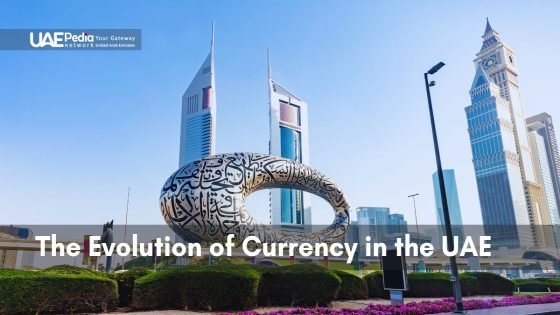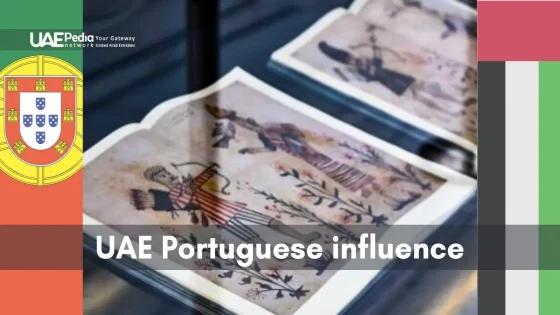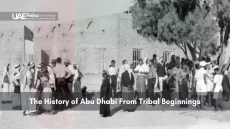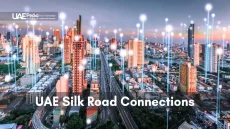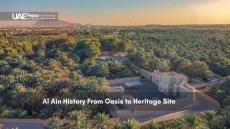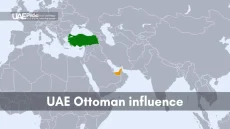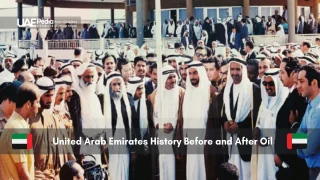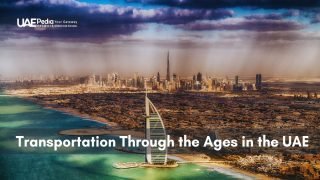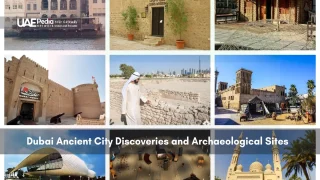Did you know this city’s roots stretch back over 4,000 years—long before the UAE’s formation in 1971? While its modern skyline dazzles दुनिया, the story of how a quiet fishing village became a crossroads of cultures remains hidden in plain sight.
This isn’t just about dates or rulers. We’re unpacking how संयुक्त अरब अमीरात’s most iconic city evolved through Bedouin wisdom, pearl diving traditions, and strategic trade routes—all while speaking directly to Hindi-speaking communities shaping its present.
You’ll discover:
- How ancient souqs laid the groundwork for today’s gold and spice markets
- Why leadership vision transformed dunes into architectural marvels
- Practical ways to connect with heritage sites during your stay
Museum curators and historians helped verify every detail, ensuring you get facts—not folklore. Ready to see how yesterday’s camel caravans inspired tomorrow’s innovations?
Introduction to Dubai’s Remarkable Past
Imagine a coastal settlement where merchants swapped pearls for spices centuries before skyscrapers dotted the horizon. This trading post, nestled along the Gulf’s turquoise waters, quietly shaped what we now recognize as one of दुनिया’s most dynamic cities.
Overview of Historical Milestones
Records show strategic treaties in the 1800s laid foundations for modern commerce. By 1894, tax exemptions attracted traders from India and beyond—a policy still celebrated today. The 1930s pearl industry collapse forced reinvention, setting the stage for तेल discoveries decades later.
Three pivotal shifts define its journey:
- Bedouin navigation skills merging with maritime trade routes
- 1920s diplomatic agreements securing regional stability
- 1950s infrastructure projects transforming desert into trade corridors
Significance for Indian Expatriates
Early Gujarati merchants left lasting imprints—their descendants now form 25% of the population. Shared monsoon winds once carried wooden dhows between Mumbai and Dubai Creek, fostering cultural exchanges visible in spice markets and Hindi dialects still किया जाता here.
This interconnected past explains why festivals like Diwali light up Deira’s lanes, and why Bollywood films premiere alongside Arabic dramas. For Indian professionals today, understanding these roots builds bridges in business and community life.
Historical Context of Dubai and the United Arab Emirates
The real foundation of this metropolis? Not steel and glass, but 19th-century handshakes between tribal leaders and British envoys. Seven emirates gradually united through diplomacy and shared vision—a process as intricate as the wind patterns guiding ancient traders.
Formation and Early Influences
Three forces shaped the region’s destiny:
- Bedouin tribes like Bani Yas creating water-sharing pacts across dunes
- 1892 Exclusive Agreement balancing British protection with local autonomy
- Discovery of strategic trade routes replacing pearling after Japan’s cultured pearl boom
British explorer J.G. Lorimer’s 1908 surveys reveal how coastal settlements evolved. His records show 50% of देश’s early income came from customs duties at Dubai Creek—still a hub today.
When oil arrived in 1966, leaders reinvested profits into ports and schools rather than palaces. This foresight created infrastructure supporting दुनिया’s busiest airport and 80% of the population now working in trade or tourism.
As one historian noted: “They built bridges before walls—literally and metaphorically.” From camel caravans to container ships, every decision echoes in the संयुक्त अरब अमीरात’s skyline today.
Dubai’s Early Beginnings and Pre-Islamic Roots
Long before the skyscrapers, the shores of what we now call दुबई में buzzed with dhows loaded with treasures from distant lands. Archaeological digs reveal pottery shards and coins from Mesopotamia—proof that this was a pitstop for traders crisscrossing the समुद्र over 3,000 years ago.
Ancient Trade and Maritime Connections
Three elements fueled these early exchanges:
- मोती divers braving shark-infested waters for oysters
- Monsoon winds guiding ships between India and the Gulf
- Freshwater springs allowing settlements to thrive in harsh climates
Pearl beds near Jumeirah became the region’s first खोज—nature’s currency traded for spices and textiles. As one archaeologist notes: “These waters weren’t just a livelihood. They were a living map connecting continents.”
By 500 BCE, nomadic tribes began settling near creeks. Families who once followed camel herds now built palm-frond homes, their lives tied to tidal rhythms. Recent excavations show stone tools and fishing nets preserved in coastal sands—silent witnesses to this shift.
What’s remarkable? Many techniques from those साल पहले still shape local culture. Modern souqs echo ancient barter systems, while pearl motifs adorn everything from jewelry to government logos. The समुद्र didn’t just feed mouths—it fed imaginations, planting seeds for today’s global crossroads.
Trade and Maritime Significance in Old Dubai
The समुद्र wasn’t just water—it was liquid gold. For generations, wooden dhows carried more than cargo; they transported dreams between continents. Sailors chasing monsoon winds created a hidden economy where मोती divers and spice traders shaped the city’s DNA.
- Pearl Power: Over 1,200 boats once hunted oysters near Jumeirah. Divers plunged 30 meters without gear—each pearl representing a month’s wages
- Monsoon Magic: Winds blew ships from Mumbai to Dubai Creek in 18 days, creating a spice route older than silk
- Tax-Free Vision: 1894’s customs exemption turned the port into a magnet for Indian textiles and Persian dates
As one trader’s journal notes: “We didn’t just move goods. We moved ideas.” When Japanese cultured pearls crashed markets in the 1930s, locals pivoted swiftly. तेल discoveries later funded modern ports, but the maritime spirit never faded.
Leadership played chess while others played checkers. The 1958 dredging of Dubai Creek—deepening it to 9 feet—allowed bigger ships. By 1965, over 500 companies operated here. Today’s free zones? They’re echoes of that clever policy-making.
What’s the real lesson? When दुनिया changes course, you adjust the sails. From pearl weights to oil barrels, this city’s heartbeat has always synced with the समुद्र’s rhythm.
The Role of the Bani Yas and Al Maktoum Dynasty
Picture a moonlit desert gathering where tribal elders seal pacts over cardamom coffee. This was the world of the Bani Yas tribe—nomadic pioneers who shaped दुबई में’s destiny long before glass towers rose. Their story begins with a bold move in 1833, when Maktoum bin Butti led 800 tribesmen to claim the creek’s fertile shores.
Founding Legend and Leadership Legacy
The Al Maktoum dynasty’s rule started with clever diplomacy. While others fought over oases, they signed the 1892 treaty with Britain—a move protecting trade routes while keeping local control. As one sheikh’s diary reveals: “We chose pens over swords to build what lasts.”
Three leadership traits still define संयुक्त अरब अमीरात today:
- Adaptability: Turning pearl crashes into port opportunities
- Inclusivity: Welcoming Indian merchants as partners in growth
- Vision: Dredging the creek in 1958 despite oil doubts
Walk through Al Fahidi Fort’s museum today, and you’ll see gold scales used by early rulers—symbols of fair trade. Notice how traditional wind towers inspire modern skyscraper designs? That’s the dynasty’s legacy: honoring roots while reaching for the दुनिया.
Current leaders mirror this balance. Projects like Expo 2020 echo their ancestors’ bold bets on connectivity. From camel-backed negotiations to blockchain deals, the thread remains: trust built through action, not just words.
Evolution of Dubai’s Economy from Pearls to Petroleum
The click of pearl counters once echoed through दुनिया’s markets—until drills struck black gold in 1966. This wasn’t just a resource swap. It was a complete rewiring of how लोग lived, worked, and dreamed.
Challenges and Economic Transition
When Japan’s cultured pearls flooded markets in the 1930s, divers faced ruin overnight. By 1950, only 3% of संयुक्त अरब अमीरात’s income came from pearls—down from 95% decades earlier. Families who’d harvested the sea for generations now stared at empty nets.
Leaders turned crisis into catalyst. They used early तेल revenues to build ports and schools instead of palaces. As one minister noted: “We invested in what lasts—minds and connections.” By 1975, oil funded 70% of infrastructure projects, creating 12,000 new काम opportunities yearly.
| Era | Key Sector | Workforce | Annual Revenue |
|---|---|---|---|
| Pearl (1920s) | Maritime Trade | 22,000 divers | $1.5M |
| Oil (1970s) | Energy & Construction | 85,000 workers | $3.4B |
The Shift Toward Modern Industry
By 1980, तेल production hit 1.7 million barrels daily. But smart leaders knew finite resources demanded reinvention. They launched Jebel Ali Free Zone in 1985—today hosting 7,500 global firms. Traditional souq merchants became logistics tycoons.
Fishermen’s sons now code apps overlooking the दुनिया सबसे tall buildings. Yet pearl motifs still crown government logos—a nod to grit that built this miracle. As one elder shared: “We didn’t abandon the past. We built on its bones.”
Modern Transformations: From a Modest Town to a Global Hub
What if sleepy fishing villages could sprout glass skyscrapers within a generation? The दुनिया witnessed this miracle as दुबई में reinvented itself through bold vision and calculated risks. Leaders turned desert sands into economic goldmines—without losing the soul of their trading-post roots.
- Smart diversification beyond तेल into tourism and tech
- Tax-free zones attracting 150+ nationalities
- Mega-projects like Palm Islands reshaping coastlines
By 2023, 90% of संयुक्त अरब अमीरात’s GDP came from non-oil sectors. Traditional souq traders now rub shoulders with blockchain developers in co-working spaces. As one urban planner noted: “We didn’t erase the past—we plugged it into tomorrow’s grid.”
Contrasts dazzle at every turn. Where camel caravans once trekked, hyperloops now test 700mph speeds. Over 200 languages echo through malls hosting unique adventure experiences alongside spice stalls. Yet Friday markets still barter like 1894—proof that progress doesn’t require amnesia.
Ready to explore how दुनिया सबसे ambitious skyline got built? Next, we’ll scale architectural marvels that turned blueprints into global icons.
Architectural Milestones: The Rise of Iconic Structures
What if steel and glass could rewrite the rules of gravity while honoring ancient traditions? This city’s skyline does exactly that—transforming desert horizons into canvases where engineering meets poetry. From spiraling towers to palm-shaped islands, every structure whispers दुनिया सबसे ambitious secrets.
Burj Khalifa and Other Architectural Wonders
The सबसे ऊंची इमारत isn’t just tall—it’s a vertical city. According to the दुबई आधिकारिक वेबसाइट, its 163 floors house offices, restaurants, and observation decks reaching 828 meters. But here’s the twist: its Y-shaped design draws inspiration from desert flowers, blending local ecology with space-age tech.
Three marvels define this evolution:
- Burj Al Arab: Sail-shaped luxury hotel floating on artificial islands
- Dubai Frame: 150-meter golden portal framing old and new districts
- Museum of the Future: Torus-shaped building etched with Arabic calligraphy
Architect Adrian Smith once noted: “We didn’t just build upward—we built outward, reimagining what urban spaces could become.” The numbers prove it—over 50% of the दुनिया’s tallest buildings now call this region home.
| Structure | Height | Unique Feature |
|---|---|---|
| Burj Khalifa | 828m | 22 million man-hours |
| Cayan Tower | 306m | 90-degree spiral twist |
| Almas Tower | 360m | Diamond-shaped offices |
Guided tours reveal hidden stories—like how Burj Khalifa’s foundation mimics a spider lily’s roots. For लोगों visiting today, these aren’t just buildings. They’re time capsules showing how trade route ingenuity evolved into दुनिया सबसे daring blueprints.
Dubai Government and Visionary Leadership
What transforms sand into smart cities? Not magic—but leadership that sees beyond horizons. The संयुक्त अरब अरब अमीरात’s governance model blends tribal wisdom with Silicon Valley ambition, creating a blueprint others copy but rarely match.
Key Figures Shaping the Future
Sheikh Rashid bin Saeed Al Maktoum’s 1958 gamble—borrowing millions to dredge Dubai Creek—set the tone. His son, Sheikh Mohammed, later launched projects like Dubai Internet City while preserving heritage sites. As one advisor recalls: “They build skyscrapers but never forget the souq.”
Three policies fuel progress:
- Tax-free zones attracting 80% of दुनिया’s top tech firms
- Gender-balanced cabinets ensuring महिला lead in key ministries
- Future Accelerators program solving global challenges through public-private partnerships
| Leader | Initiative | Impact |
|---|---|---|
| Sheikh Rashid (1958-1990) | Port Rashid Development | Increased trade by 400% |
| Sheikh Mohammed (2006-present) | Smart Dubai 2021 | 94% government services digitized |
| Sheikha Latifa (Culture) | Alserkal Arts District | 200+ creative startups supported |
Over 200 nationalities रहते हैं here because leaders treat diversity as fuel, not friction. When global talent arrives, they find visas processed in hours—not weeks. As Sheikh Mohammed famously said: “We compete with ourselves first. If you sleep, you lose.”
This mindset explains why 90% of लोग here call Dubai home—not just a workplace. From AI-powered traffic systems to traditional मजलिस councils, every decision honors roots while racing toward tomorrow.
Cultural Heritage and Legacy in a Changing City
Walk through दुबई में’s spice-scented alleys, and you’ll hear whispers of centuries-old souq banter blending with the hum of hyperloops. This city wears its heritage like a finely embroidered कंदोरा—traditional threads woven into futuristic fabrics. While glass towers climb skyward, museums and festivals keep ancestral stories dancing at street level.
The Etihad Museum’s interactive exhibits reveal how Bedouin बात (oral traditions) shaped national identity. Nearby, Al Fahidi Fort’s wind towers—ancient AC systems—stand guard over artifacts like pearl divers’ weights and Persian trading maps. As one curator told me: “We’re not preserving dust. We’re keeping dialogues alive between eras.”
Three ways लोग experience living history today:
- Heritage tours where you barter dates using 19th-century market rules
- Qasr Al Hosn festival’s falconry demos and palm-frond weaving workshops
- Al Marmoom camel races blending sport with nomadic legacy
Modern galleries like Alserkal Avenue showcase calligraphy on digital canvases, while Dubai Opera stages दुनिया सबसे innovative Emirati folkloric dance fusions. Even the cultural traditions of pearl diving get reimagined as underwater VR experiences at The Green Planet.
Friday mornings still smell of cardamom coffee in Deira’s homes—a ritual किया जाता since the 1800s. Street murals near Dubai Creek depict dhows that once carried Indian spices, their colors as vibrant as Diwali lights. As filmmaker Nayla Al Khaja observes: “Our stories aren’t in books. They’re in the hands shaping clay ovens and the feet dancing on National Day.”
For visitors, heritage becomes hands-on. Try writing Arabic poetry with a reed pen at the Sheikh Mohammed Centre. Or join a moonlight desert feast where elders share tales of star navigation. These aren’t museum pieces—they’re living threads in संयुक्त अरब’s ever-unfolding tapestry.
Exploring dubai history in hindi
Ever tasted मसाला चाय in Deira’s alleys and wondered how these flavors crossed oceans? The bond between दुबई में communities and India runs deeper than spices—it’s woven through centuries of monsoons, migrations, and mutual growth. Let’s unpack stories where लोगों became neighbors long before skylines rose.
Timeless Threads Connecting Shores
Gujarati traders first docked here in the 1800s, their wooden dhows heavy with cotton and dates. By 1900, over 25% of संयुक्त अरब अमीरात’s population spoke Hindi dialects—a legacy visible today in Bur Dubai’s sari shops and Bollywood billboards. As one merchant’s diary notes: “We didn’t just trade goods. We traded home.”
Three pillars strengthened these ties:
- Shared monsoon winds guiding ships between Mumbai and Dubai Creek
- 1894’s tax-free policy attracting textile merchants from Surat and Mumbai
- Pearl industry partnerships where Indian financiers backed Emirati divers
Friday markets still buzz with Hindi-Arabic bargaining—किया जाता since camel caravans carried silks to Persia. Families who settled here in the 1960s now run 40% of local businesses. Their story? It’s etched in दुनिया’s only Hindi-Arabic street signs near Meena Bazaar.
Want to taste this fusion? Try लोगों’s favorite karak chai stalls near Al Fahidi—where cardamom meets saffron in cups passed through generations. These flavors aren’t just drinks. They’re liquid history.
The Impact of Oil Discovery on Dubai’s Growth
What if black gold could rewrite a desert’s destiny? In 1966, drills struck oil 75 miles offshore—a moment that reshaped दुबई में’s economy like monsoon winds redirecting trade routes. Let’s unpack how this liquid treasure transformed dunes into highways and fishing nets into fiber-optic cables.
From Pearls to Pipelines
When the first oil shipment sailed in 1969, revenues jumped 300% within a year. But leaders faced a dilemma: feast today or invest tomorrow? Sheikh Rashid’s team chose wisely, funneling 70% of early profits into ports and schools. As his advisor recalled: “We built runways before palaces—our people needed wings, not thrones.”
The shift wasn’t smooth. Families who’d harvested pearls for generations now operated drilling rigs. Archives reveal letters from divers-turned-engineers: “My hands knew ropes, not wrenches. But the sea taught me patience—that skill translated.”
- 1966: First commercial oil field discovered at Fateh
- 1971: Formation of संयुक्त अरब अमीरात stabilized regional partnerships
- 1979: Port Rashid became दुनिया’s largest man-made harbor
By 1985, oil funded 90% of infrastructure projects. Yet visionary policies ensured diversification—Jebel Ali Free Zone launched that year, now housing 7,500 global firms. Workers who once bartered dates now trade blockchain contracts.
| Year | Oil Revenue | Key Project |
|---|---|---|
| 1970 | $25M | Dubai Airport Expansion |
| 1980 | $3.4B | World Trade Centre |
| 2000 | $18B | Palm Islands Blueprint |
Today, less than 1% of GDP comes from oil—yet its legacy fuels innovation. As one engineer noted while wiring Burj Khalifa: “Every circuit honors those first roughnecks who dared drill deeper.” The तेल era didn’t just bankroll towers—it built a mindset where sand becomes silicon, and pipelines become possibilities.
Dubai as a Global Business and Tourism Magnet
Where desert sands meet glass towers, a global crossroads thrives—blending ancient souq haggling with blockchain deals. This city rewrote the rules of engagement, becoming दुनिया सबसे magnetic hub for dreamers and doers alike. Over 200 nationalities now call it home, drawn by opportunities as vast as the Arabian sky.
Trade, Tourism, and International Appeal
Three forces fuel this transformation:
- दुबई मेट्रो’s driverless trains whisking 600,000 daily riders between futuristic landmarks
- Tax-free zones hosting 65% of दुनिया’s Fortune 500 companies
- Annual events like Gulf Food drawing 5,000+ exhibitors from 120 countries
Tourism boomed from 5 million visitors in 2000 to 16.7 million in 2023. Luxury resorts share horizons with heritage districts—where gold souq merchants now accept crypto. As one investor noted: “You can close a deal at Burj Khalifa’s peak, then seal it with karak chai at a street stall.”
The संयुक्त अरब अमीरात’s secret? Turning trade DNA into 21st-century superpowers. Traditional dhow ports now dock cruise ships, while AI-powered customs clear cargo in 4 hours. Over 85% of लोग here are expats—proof that diversity drives innovation.
Want to join the buzz? Pack ambition alongside sunscreen. From दुनिया में’s largest mall to blockchain-powered visas, this city keeps rewriting what’s possible. As they say in Deira’s markets: “Come for the gold, stay for the golden opportunities.”
Societal and Cultural Shifts Over the Decades
Picture neighborhoods where grandmothers share किया जाता karak chai recipes with tech interns from five continents. This blend of tradition and tomorrow defines दुबई में’s social fabric—a living lab where 200+ nationalities रहते हैं and reshape daily life.
- 1980s labor policies inviting global talent
- 2005 property laws allowing expats to own homes
- 2019 Golden Visa program retaining skilled professionals
Weekends shifted from Friday-Saturday to Saturday-Sunday in 2006, aligning with दुनिया markets. Yet Friday बात (family gatherings) remain sacred—now held in skyscraper gardens overlooking dunes. As sociologist Dr. Amal Khamis notes: “We’ve added chapters, not erased the book.”
Deira’s spice traders now video-call suppliers in Kerala, while Jumeirah moms swap school tips in Hindi-Arabic blends. Over 65% of residents under 35 drive देशों में trends—from vegan shawarma stalls to AI-powered mosques.
Gender roles evolved quietly but powerfully. Since 2015, महिला cabinet members lead space and AI ministries. Yet traditional काम like henna artistry thrives as a $300M industry. Heritage festivals now feature drone shows alongside falconry—proof that roots and wings coexist.
What’s next? As one teacher in Al Barsha says: “Our kids code robots but still kiss elders’ hands first.” The दुनिया सबसे dynamic city keeps rewriting its social script—one chai sip at a time.
Key Landmarks: Museums, Monuments, and Cultural Sites
Ever touched walls that witnessed dhows docking centuries before smartphones existed? Al Fahidi Fort’s 18th-century coral-stone ramparts hold stories of pearl divers, spice traders, and visionary leaders—all preserved within दुबई में’s oldest standing structure.
Guardian of Time
Built in 1787, this fortress once defended the city from invasions. Today, its wind towers house the Dubai Museum, where 3D dioramas recreate लोगों’s lives before skyscrapers. As curator Amina Al-Mazroui explains: “We don’t display artifacts—we resurrect conversations between generations.”
Three highlights captivate visitors:
- Pearl diving gear showing how divers tied stone weights to their feet
- Interactive maps tracing monsoon-driven trade routes across the समुद्र
- A souq replica where holographic merchants barter like it’s 1894
| Year | Milestone | Significance |
|---|---|---|
| 1787 | Fort Construction | Used coral, gypsum, and palm wood |
| 1971 | Museum Opening | First cultural institution in दुनिया सबसे modern city |
| 2020 | Augmented Reality Upgrade | 90% of exhibits now interactive |
Notice the bullet holes near the entrance? They’re from 19th-century tribal clashes—a stark contrast to today’s दुबई मेट्रो gliding past. Friday mornings here buzz with school groups sketching ancient coins, while elders share बात (stories) under neem trees.
This landmark isn’t frozen in time. Night tours let you handle replica pearl scales by moonlight, and workshops teach palm-frond weaving. As one visitor tweeted: “History here doesn’t whisper—it high-fives you.”
The Significance of Technological and Transportation Advancements
What if a train could shape a city’s destiny? The दुबई मेट्रो did just that—transforming how 600,000 daily riders काम and explore. This driverless marvel isn’t just tracks and trains. It’s a time machine connecting heritage souqs to AI-powered business hubs.
Redefining Urban Mobility
Launched in 2009, the metro holds two Guinness World Records: longest fully automated rail network and largest दुनिया station (Burjuman spans 25,000m²). Its 75km route weaves through 47 stations, many mirroring traditional wind towers in design. As engineer Fatima AlHashimi notes: “We built tomorrow’s transit using yesterday’s wisdom.”
| Milestone | Year | Impact |
|---|---|---|
| First Driverless Line | 2009 | Cut traffic by 30% |
| Expo 2020 Route Extension | 2021 | 20M+ visitors transported |
| Green Line Solar Stations | 2023 | 40% energy savings |
Beyond rails, innovations like hyperloops testing 700mph speeds and flying taxis किया जाता prove the region’s ambition. The Roads and Transport Authority reports 85% of residents now रहते हैं within 500m of public transit—a global benchmark.
Yet tradition thrives underground. At Union Station, Arabic calligraphy dances across digital displays while oud melodies play during rush hour. This blend of बात (stories) and silicon makes every commute a cultural journey.
Final Reflections on Dubai’s Everlasting Journey
Beneath the shimmer of glass towers lies a heartbeat older than recorded time—a rhythm of resilience that turned desert sands into global crossroads. From Bedouin बात (wisdom) echoing in wind towers to AI-driven metros, this दुनिया marvel proves traditions and tomorrow can dance together.
Leaders transformed pearling hardships into ports, oil wealth into innovation hubs, and dunes into दुनिया सबसे daring skyline. Yet Friday markets still trade spices like 1894, and elders share किया जाता stories under neem trees. Every skyscraper’s steel whispers of ancient souq bargains.
What truly defines संयुक्त अरब अमीरात’s spirit? It’s fishermen’s grandsons coding apps overlooking their ancestors’ seas. It’s Bollywood billboards glowing beside Arabic calligraphy. लोगों here don’t erase history—they build on its bones with solar-powered ambition.
As you walk Deira’s lanes or marvel at Burj Khalifa, listen closely. The दुनिया में’s most dynamic city still hums with pearl divers’ courage and dhow captains’ winds. Ready to add your chapter to this unending story?
Its strategic location on ancient trade routes laid the foundation, but visionary leadership and oil discoveries in the 1960s fueled rapid modernization. Investments in infrastructure, tourism, and tech turned sand dunes into skyscrapers—think Burj Khalifa’s needle piercing the clouds!
For centuries, dhows carried spices, textiles, and pearls between Gujarat, Kerala, and the Gulf. Even today, the aroma of karak chai in Deira’s souks echoes Mumbai’s street stalls—a testament to shared maritime heritage.
A> This 1787 fortress-turned-museum reveals Bedouin life through wind towers and traditional majlis seating. It’s like stepping into a time capsule where you’ll see how pearl divers held their breath for minutes—long before scuba gear existed!
When Japanese cultured pearls flooded markets in the 1930s, Dubai pivoted to oil, then to trade and tourism. Imagine—those same dhows that carried pearls now host sunset dinners for Instagram travelers!
From Diwali lights twinkling beside Ramadan lanterns to Hindi films screening at Global Village, the diaspora bridges cultures while respecting local customs. Ever tried henna art during Eid? It’s a collaboration centuries in the making!
This driverless wonder mirrors the city’s ambition—spotless, efficient, and linking old gold souks to futuristic Dubai Marina. Pro tip: Grab a window seat to watch sandscapes morph into glass towers mid-ride!

